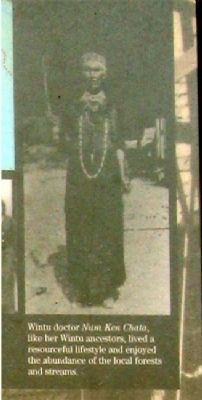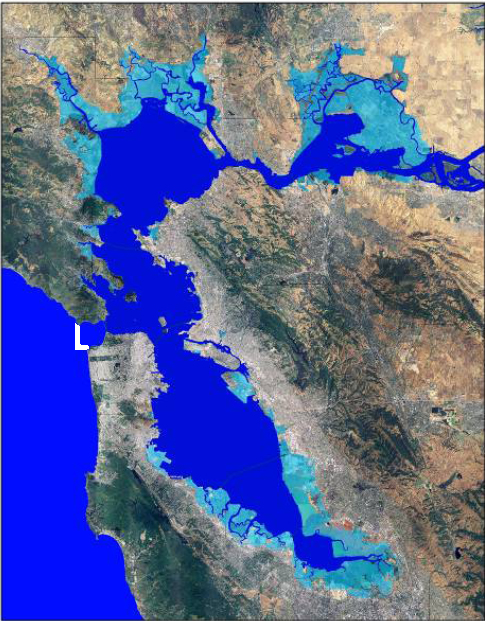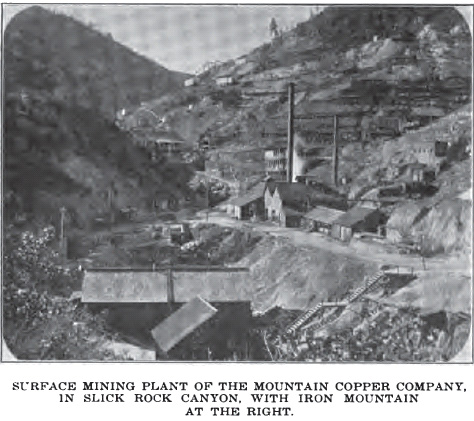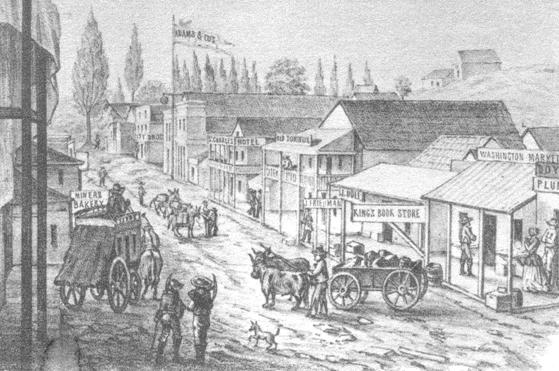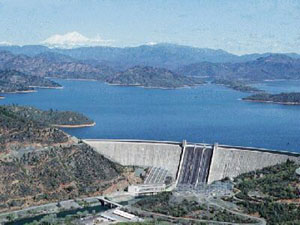& The Mining and Minerals Policy Act of 1970 at 30 U.S.C. § 21 (a) in which the Congress declares it is “…the continuing policy of the Federal Government in the national interest to foster and encourage private enterprise in (1) the development of economically sound and stable domestic mining, minerals, metal and mineral reclamation industries, (2) the orderly and economic development of domestic mineral resources, reserves, and reclamation of metals and minerals to help assure satisfaction of industrial, security and environmental needs…”
eleemosynary pettifoggers admeasurer (epa)

Or take the case of Bedrock Bank . . .
Bedrock Bank Gets Too Big Too Fast
Bedrock Bank’s new president was determined to turn his bank into the region’s biggest
lender. Bedrock’s loan officers got the message and started making as many loans as they could
for condominium developments, shopping centers, office buildings, and high-priced suburban
housing developments. Loan applications were not always checked as closely as they had been
in the past, and some of the loans were approved more quickly than they had been in the old
days. But nobody seemed concerned because the local economy was strong and real estate
values were rising rapidly.
Everything seemed fine; everyone was making money. But then the economy slowed down, and
things took a turn for the worse. The weak economy forced many businesses to close, leaving
lots of vacant office space. Real estate values plummeted, and many developers fell behind on
their loan payments.
In the end, Bedrock Bank was losing so much money on bad real estate loans that government
regulators were forced to step in and close it. The regulators tried to find a buyer for Bedrock,
but no other bank wanted to get stuck with all the loans that had gone bad. Eventually,
another bank agreed to buy Bedrock if the federal government would agree to keep many of
the problem loans.

The mayor of Pebbleton announces that, since the
colored flowers are so rare and valuable, they are
going to be used as money, with petals for change.
Is this a good idea? What qualities does a good
form of money have? Why? Which of these qualities
do flowers have and which do they lack? What
would happen to Pebbleton’s economy if someone
then discovered a new sunlit cavern with thousands
of flowers growing in it? Should someone control
the growth of those flowers? Who?
Judicial notice is taken of the court dockets in the state court proceedings.
Fed. R. Evid. 201(b); Dawson v. Mahoney, 451 F.3d 550, 551 (9th
Cir. 2006). Judicial notice is also taken of the second round habeas corpus
petition, including attachments, that was filed in the California Supreme
Court. Id. This document was not considered by the district court. The
attachments include the Superior Court’s order denying Porter’s second
round habeas petition and the Court of Appeal’s decision on direct appeal.
Judicial notice is also taken of California disciplinary proceedings. Fed. R.
Evid. 201(b); White v. Martel, 601 F.3d 882, 885 (9th Cir. 2010).
Survey: Half of EPA Scientists Complain of Political Interference, Waxman to Investigate
From the AP : By Paul Kiel - April 23, 2008, 12:40PM
Nearly 400 scientists said they had witnessed EPA officials misrepresenting scientific findings, 284 said they had witness the "selective or incomplete use of data to justify a specific regulatory outcome" and 224 scientists said they had been directed to "inappropriately exclude or alter technical information" in an EPA document.
Just another indication that the EPA has been possibly the most politicized agency in the Bush administration (a bold claim, I know). And what does the EPA have to say about it?
Update : You can see the report here . In response to the UCS survey, one scientist at an EPA regional office wrote: "Do not trust the Environmental Protection Agency to protect your environment."
Update : In a letter to EPA chief Stephen Johnson today, House oversight committee Chairman Henry Waxman (D-CA) warned Johnson that he can expect some questions about this when he testifies before the committee in May. That letter is below.
Update : Sen. Sheldon Whitehouse (D-RI), calling the report "a scathing indictment of the Bush administration's repeated efforts to twist, misuse, and ignore scientific facts in favor of special interests" has also let it be known that the Senate environmental committee will be digging in on this.
Today the Union of Concerned Scientists released the results of its survey of nearly 1,600 EPA scientists. The survey's disturbing findings indicate that EPA scientists face significant political interference with their work. I have enclosed the report for your convenience and ask that you be prepared to respond to its findings at May's Oversight Committee hearing.
Almost 1,600 EPA scientists completed the Union of Concerned Scientists survey questionnaire. Over 22% of these scientists reported that "selective or incomplete use of data to justify a specific regulatory outcome" occurred "frequently" or "occasionally" at EPA. 94 EPA scientists reported being frequently or occasionally "directed to inappropriately exclude or alter technical information from an EPA scientific document." Nearly 200 EPA scientists said that they have frequently or occasionally been in "situations in which scientists have actively objected to, resigned from or removed themselves from a project because of pressure to change scientific findings."
Political appointees at EPA and other agencies appear to be a major source of political interference. Over 500 EPA scientists knew of "many" or "some" cases "where EPA political appointees had inappropriately involved themselves in scientific decisions." Even more EPA scientists knew of "many" or "some" cases "where political appointees from other federal agencies," including the White House, "had inappropriately involved themselves in decisions." In open-ended essay responses, "nearly a hundred EPA scientists identified the White House Office of Management and Budget (OMB) as a primary culprit." These essays included numerous comments like "OMB should stop interfering in EPA Science" and "[t]he unprecedented and unwarranted influence of the EPA's scientific work and findings by the White House and OMB must end."
Overall, 889 EPA scientists said they "personally experienced at least one incident of political interference during the past five years." Based on the survey, there may have been as many as 2,604 incidents of political interference at EPA during that period of time.
When asked about the role of science in EPA decisionmaking, the scientists provided some troubling responses. Nearly half of the scientists said that EPA determinations "occasionally, seldom, or never make use of the best judgment of its scientific staff." Over 550 scientists reported that the agency "occasionally, seldom, or never heeds advice from independent scientific advisory committees."
These survey results suggest a pattern of ignoring and manipulating science in EPA's decisionmaking. At May's hearing, the Committee will examine one apparent example of this disturbing trend: EPA's recent revision of the national air quality standards for ozone. You should also expect members of the Committee to ask about these survey results and other evidence of political interference with science at EPA.
Sincerely,
Henry A. Waxman
Chairman
Without evidence of legally significant contamination, the government was unjustified in filing suit to gain access to private property for a response action under the Superfund law, according to a ruling by a federal district court. [ U.S. v. Tarkowski , No. 99 C 7308, N.D.Ill., Nov. 26, 2001] Consequently, the victorious property owner can recoup his litigation costs.
John Tarkowski is an elderly, indigent resident of a 16-acre tract situated in Wauconda, Ill., an affluent community northwest of Chicago. Until he was disabled, he worked as a building contractor. Using surplus materials, he built his house many years ago when the area was a rural backwater. His yard is filled with what his upscale neighbors regard as junk — wooden pallets, tires, empty drums, batteries, paint cans and other construction materials.
For more than 20 years, Tarkowski's neighbors had harassed him and had complained to environmental officials. The U.S. Environmental Protection Agency (EPA) inspected his property in 1979, but concluded that it did not pose any environmental hazard. In 1995, EPA rated the property zero on its hazard rating scale. Two years later, state authorities took soil and water samples and found no noteworthy contamination.
In 1998, EPA took additional samples of soil and materials on his property, finding only trace amounts of contaminants that, in fact, were comparable to levels found in surrounding properties and did not indicate any release. Nevertheless, EPA filed suit against Tarkowski alleging an “imminent and substantial endangerment to … public health … and the environment” based on an actual or possible release of hazardous substances. EPA sought an order to gain access to the site for investigative and remedial purposes. After hearing the evidence, a federal district court dismissed EPA's suit. An appeals court upheld the ruling, castigating the agency's conduct and judgment. [248 F.3d 596 (7th Cir. 2001)]
Tarkowski petitioned the district court for an award of attorney's fees and expenses under the Equal Access to Justice Act. The law allows certain parties who prevail against the federal government in a lawsuit to recover their litigation expenses unless the government's position was reasonable.
Finding EPA's stance totally unjustified, the district judge said, “There was no evidence of legally significant contamination and … the government's claim of an imminent and substantial endangerment was factually baseless.” EPA cannot reasonably insist that “if a hazard was found, no matter how small, it had the right to do whatever it wanted on Tarkowski's property,” he added.
“It is to protect citizens against … overreaching actions by government bureaucrats that courts are empowered to prevent arbitrary and capricious interference with property rights,” said the judge, again citing the appeals court. “The government's position … ‘would give the agency in effect an unlimited power of warrantless searches and seizures [which the Superfund law] does not contemplate and the Fourth Amendment would almost certainly forbid,'” he concluded with yet another reference to the appellate opinion.
Knowing of your interest in property rights issues, I wanted to inform you that I recently became an original cosponsor of H.R. 1885 , the Private Property Rights Protection Act of 2009. This legislation would prohibit the state or federal government from exercising its power of eminent domain for the purposes of economic development, such as building a lucrative shopping mall. I had also cosponsored similar legislation introduced in the previous two sessions of Congress in response to the Supreme Court's 2005 ruling in Kelo v. City of New London, Connecticut .
I believe the Fifth Amendment's “takings clause” is very clear: the government's authority to take private property is limited to instances when it is to be put to a legitimate public use, such as a military base or public road. But in the Court's 5-4 decision in the Kelo case, it declared that mere economic development projects met the "public use" criteria. I strongly disagree with the Court's decision, and believe that the architects of the Bill of Rights never intended the Fifth Amendment to give government the authority to take an individual's private property in order for it to be used for a more lucrative purpose.
Private property ownership is a fundamental right and has always been a cornerstone of our prosperity and high standard of living. The Fifth Amendment famously protects our property rights from undue government interference, stating that property shall not "be taken for public use, without just compensation." Coupled with the Fourteenth Amendment, the Constitution is designed to prohibit the government from taking private property "without due process of law." I will work with members of both parties in support of H.R. 1885 to ensure that private property rights are protected as the founding fathers intended.
Congressman Walley Herger, (our Congressman)

The EPA regulates FIFRA
- the Federal Insecticide, Fungicide and Rodenticide Act
Alle Ding sind Gift, und nichts ohn Gift; allein die Dosis macht, daß ein Ding kein Gift ist.
"All things are poison and nothing is without poison, only the dose permits something not to be poisonous." Paracelsus
Liberty's Greatest Commandment
Our Declaration of Independence states that each person is “endowed by their Creator with certain unalienable rights.” These are INDIVIDUAL RIGHTS. They are not subject to revocation by government, not even by majority vote. That is why our founders gave us a constitutional republic, instead of a democracy.
The most important of these rights, Mr. President, are property rights – the right to the fruit of one's labor. In the words of Thomas Jefferson,
“To take from one because it is thought that his own industry and that of his father's has acquired too much, in order to spare to others, who, or whose fathers have not exercised equal industry and skill, is to violate arbitrarily the first principle of association--'the guarantee to every one of a free exercise of his industry and the fruits acquired by it.”
Dr. Benjamin Rush, a signer of the Declaration of Independence, is quoted as warning two centuries ago:
"Unless we put medical freedom into the Constitution, the time will come when medicine will organize into an underground dictatorship. . . . The Constitution of this republic should make special privilege for medical freedom as well as religious freedom."
quo warranto intervention citizen suit incidental and peremptory administrative mandamus writ of right and writ of possession
intervention brief
Interlocutory Appeal Intervention Complaint and Citizen's Arrest of Judicial Taking
"alterius non sit qui suus esse potest" Paracelsus
"let no man that can belong to himself be of another"
BEAUTIFUL MOUNTAIN ROCKS FROM BOULDER CREEK FOR SALE
The border for the Iron Mountain Mine website includes two illustrations from the 1908 edition of the Mineral Resources of California, California State Mining Bureau. Next is a 15th century tapestry of the Fang Hu Mountains, one of Chinese mythologies 5 mountains of the immortals. Above is a sketch by an unknown artist of Ganymede (associated with the astrological sign Aguarius), the Trojan Prince abducted by Zeus from Mount Ida, who was granted immortality and the auspicious and esteemed position of cup-bearer. Ganymede was afterwards also regarded as the genius of the fountains of the Nile, the life-giving and fertilizing river. Thus the divinity that distributed drink to the gods in heaven became the genius who presided over the due supply of water on earth. Arms of the Freeminers, Newland. The Shasta Trinity Standard displays the Alphyn, a mythic creature said to have the mightiest roar, and the Celtic Peacock of everlasting life. The sketch is of the town of Shasta after gold was discovered, The painting is of Shasta from the turn of the last century,
Drawn by Küchel & Dresel; lithograph by Britton and Rey.
From the Library of Congress American Memory Historical Collections. (Also in the Shasta museum) . The proposed "Ohlone Mountain Dam". This unsigned print of Mount Shasta could have been drawn from the vantage of Iron Mountain Mine. *"THIS HAND IS THE ENEMY OF TYRANTS".
About Us | Site Map | Privacy Policy | Contact Us | ©2010 Artesian Mineral Development & Consolidated Sludge, Inc.








